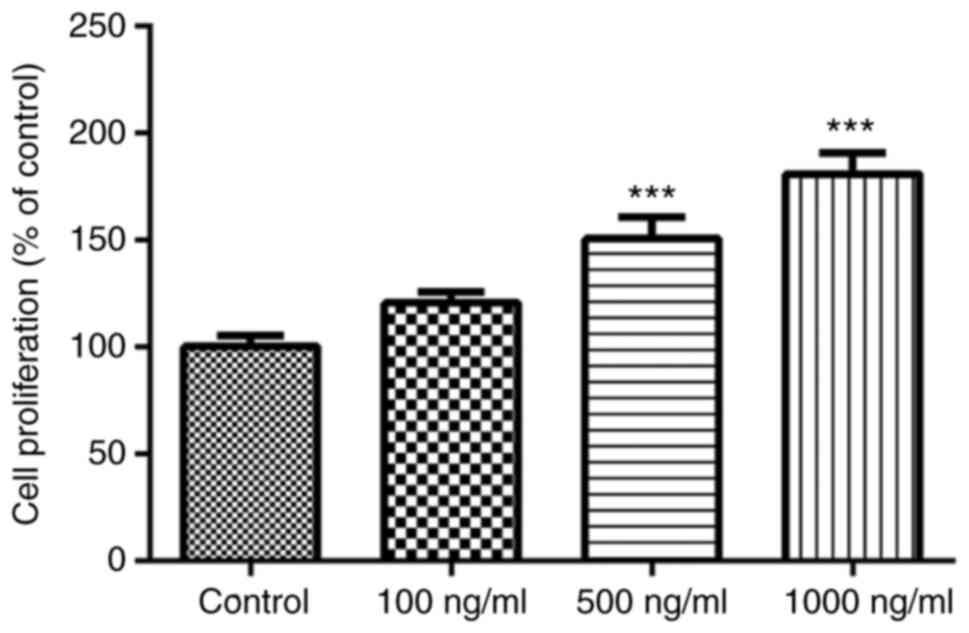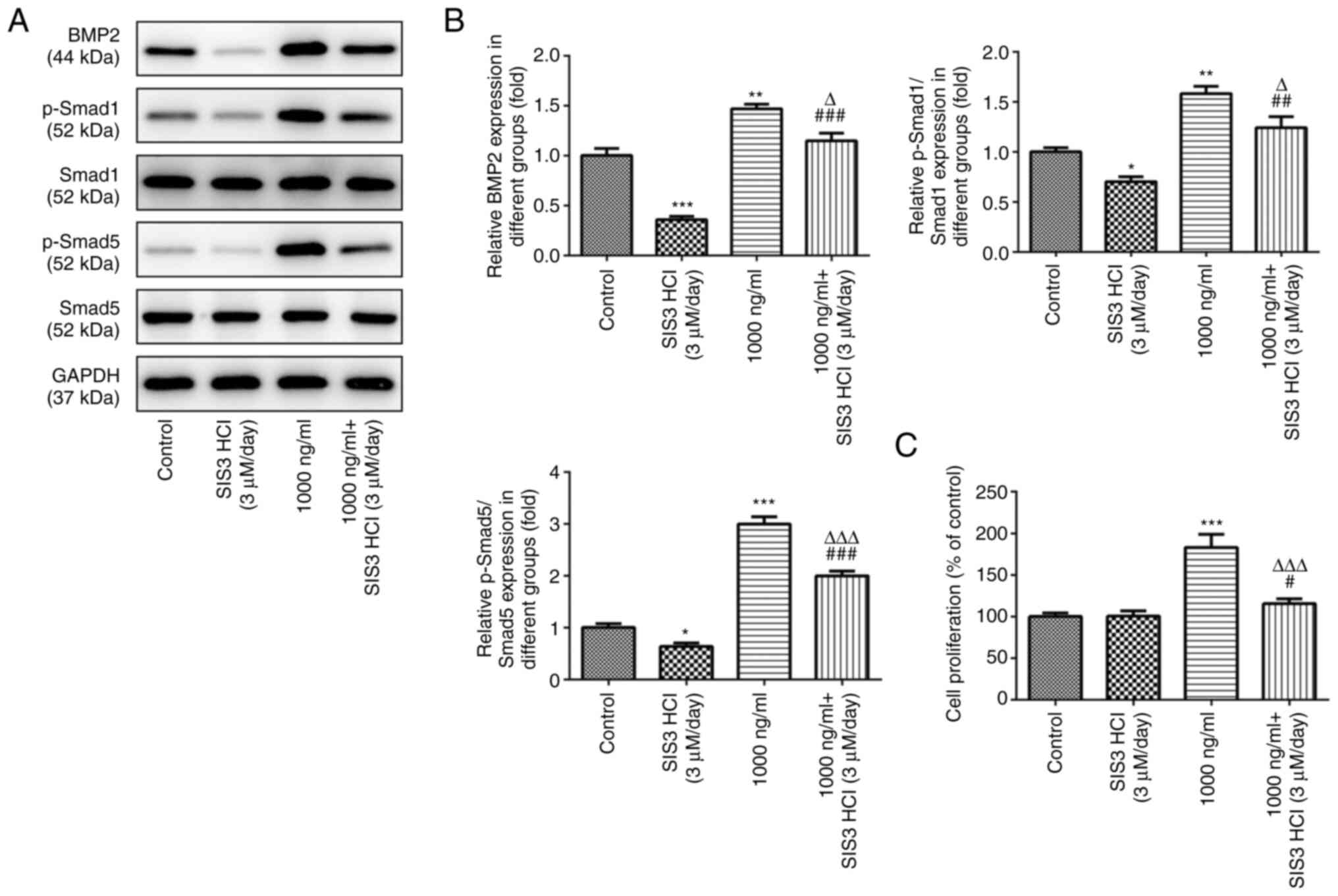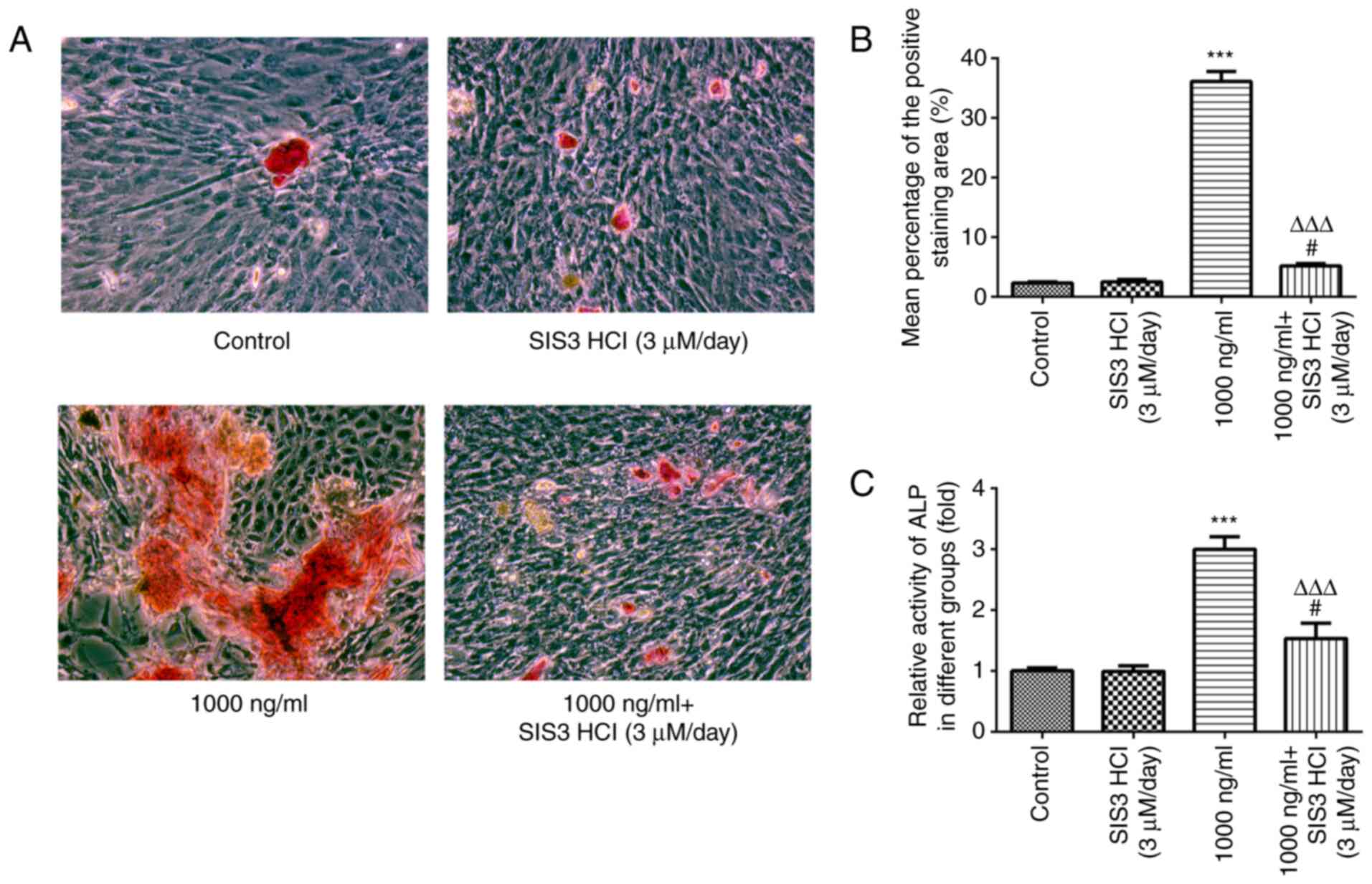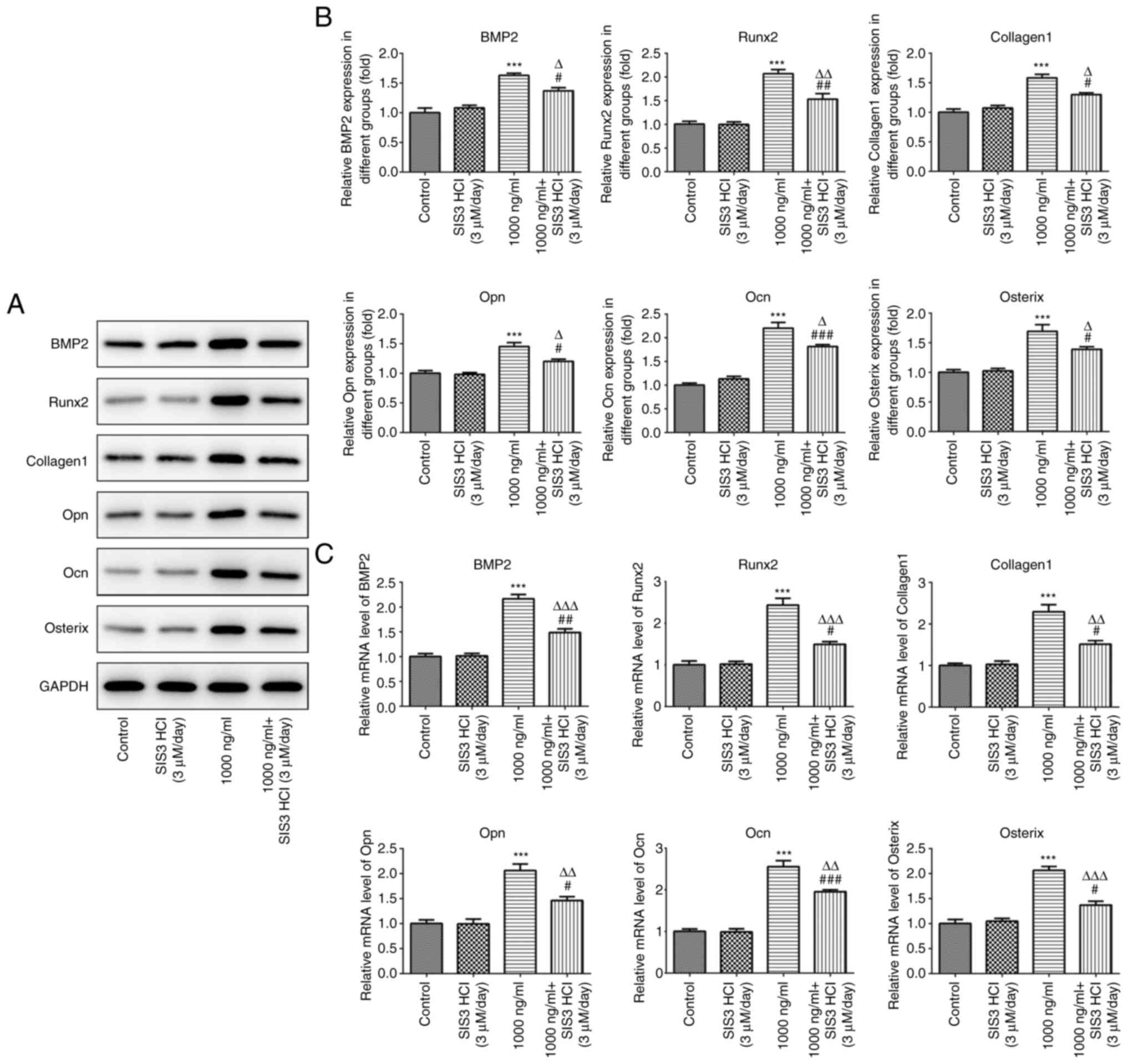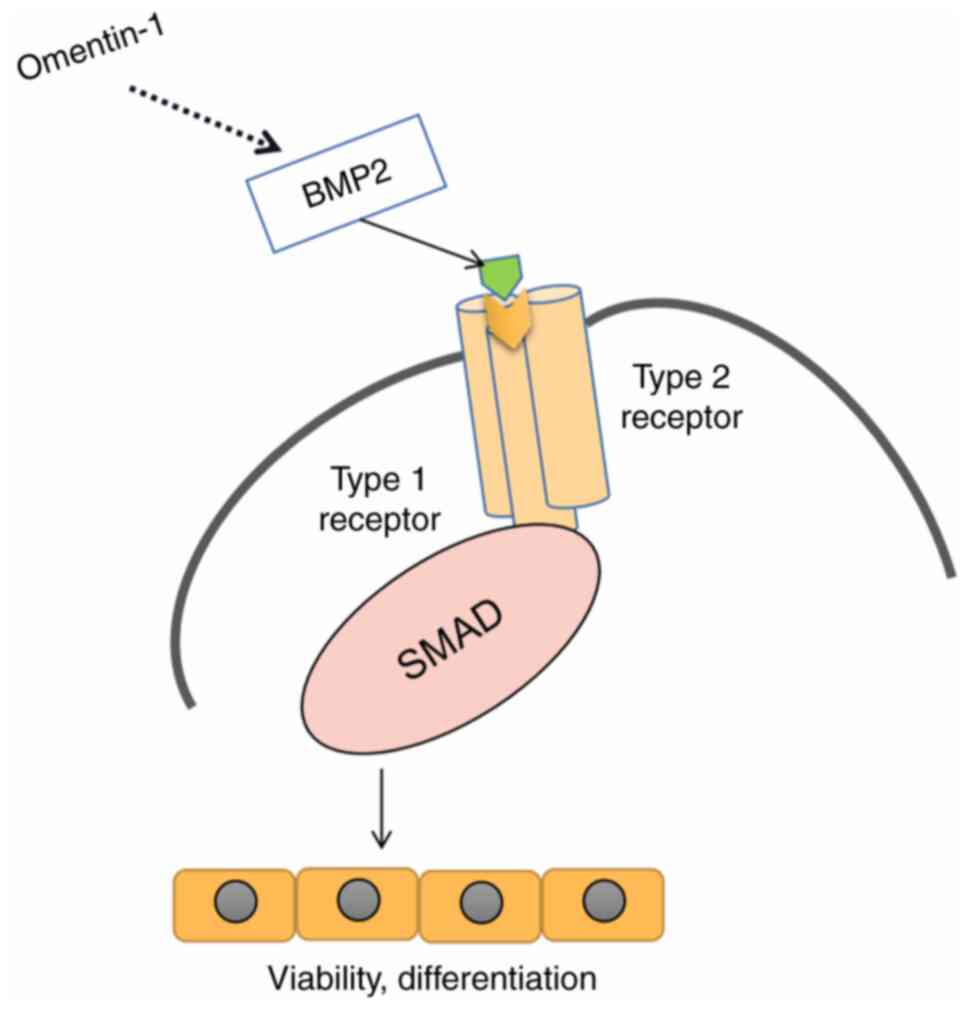|
1
|
Miller PD: Management of severe
osteoporosis. Expert Opin Pharmacother. 17:473–488. 2016.
View Article : Google Scholar : PubMed/NCBI
|
|
2
|
Noh JY, Yang Y and Jung H: Molecular
mechanisms and emerging therapeutics for osteoporosis. Int J Mol
Sci. 21:76232020. View Article : Google Scholar : PubMed/NCBI
|
|
3
|
Clark S: Osteoporosis-the disease of the
21st century? Lancet. 359:17142002. View Article : Google Scholar : PubMed/NCBI
|
|
4
|
Cooper C: Epidemiology of osteoporosis.
Osteoporos Int. 9 (Suppl 2):S2–S8. 1999. View Article : Google Scholar : PubMed/NCBI
|
|
5
|
Johnell O and Kanis J: Epidemiology of
osteoporotic fractures. Osteoporos Int. 16 (Suppl 2):S3–S7. 2005.
View Article : Google Scholar : PubMed/NCBI
|
|
6
|
Straka M, Straka-Trapezanlidis M, Deglovic
J and Varga I: Periodontitis and osteoporosis. Neuro Endocrinol
Lett. 36:401–406. 2015.PubMed/NCBI
|
|
7
|
Kurra S, Fink DA and Siris ES:
Osteoporosis-associated fracture and diabetes. Endocrinol Metab
Clin North Am. 43:233–243. 2014. View Article : Google Scholar : PubMed/NCBI
|
|
8
|
Lane NE: Epidemiology, etiology, and
diagnosis of osteoporosis. Am J Obstet Gynecol. 194 (Suppl
2):S3–S11. 2006. View Article : Google Scholar : PubMed/NCBI
|
|
9
|
Baccaro LF, Conde DM, Costa-Paiva L and
Pinto-Neto AM: The epidemiology and management of postmenopausal
osteoporosis: A viewpoint from Brazil. Clin Interv Aging.
10:583–591. 2015. View Article : Google Scholar : PubMed/NCBI
|
|
10
|
Lane JM, Russell L and Khan SN:
Osteoporosis. Clin Orthop Relat Res. 372:139–150. 2000. View Article : Google Scholar : PubMed/NCBI
|
|
11
|
Chen X, Wang Z, Duan N, Zhu G, Schwarz EM
and Xie C: Osteoblast-osteoclast interactions. Connect Tissue Res.
59:99–107. 2018. View Article : Google Scholar : PubMed/NCBI
|
|
12
|
Jayakumar P and Di Silvio L: Osteoblasts
in bone tissue engineering. Proc Inst Mech Eng H. 224:1415–1440.
2010. View Article : Google Scholar : PubMed/NCBI
|
|
13
|
Malhotra A and Habibovic P: Calcium
phosphates and angiogenesis: Implications and advances for bone
regeneration. Trends Biotechnol. 34:983–992. 2016. View Article : Google Scholar : PubMed/NCBI
|
|
14
|
Leijten J, Chai YC, Papantoniou I, Geris
L, Schrooten J and Luyten FP: Cell based advanced therapeutic
medicinal products for bone repair: Keep it simple? Adv Drug Deliv
Rev. 84:30–44. 2015. View Article : Google Scholar : PubMed/NCBI
|
|
15
|
Wei DX, Dao JW and Chen GQ: A Micro-Ark
for Cells: Highly open porous polyhydroxyalkanoate microspheres as
injectable scaffolds for tissue regeneration. Adv Mater.
30:e18022732018. View Article : Google Scholar : PubMed/NCBI
|
|
16
|
Shen X, Zhang Y, Gu Y, Xu Y, Liu Y, Li B
and Chen L: Sequential and sustained release of SDF-1 and BMP-2
from silk fibroin-nanohydroxyapatite scaffold for the enhancement
of bone regeneration. Biomaterials. 106:205–216. 2016. View Article : Google Scholar : PubMed/NCBI
|
|
17
|
Cahill KS, Chi JH, Day A and Claus EB:
Prevalence, complications, and hospital charges associated with use
of bone-morphogenetic proteins in spinal fusion procedures. JAMA.
302:58–66. 2009. View Article : Google Scholar : PubMed/NCBI
|
|
18
|
Skovrlj B, Koehler SM, Anderson PA,
Qureshi SA, Hecht AC, Iatridis JC and Cho SK: Association between
BMP-2 and carcinogenicity. Spine (Phila Pa 1976). 40:1862–1871.
2015. View Article : Google Scholar : PubMed/NCBI
|
|
19
|
Xu C, Su P, Chen X, Meng Y, Yu W, Xiang AP
and Wang Y: Biocompatibility and osteogenesis of biomimetic
Bioglass-Collagen-Phosphatidylserine composite scaffolds for bone
tissue engineering. Biomaterials. 32:1051–1058. 2011. View Article : Google Scholar : PubMed/NCBI
|
|
20
|
Zhang Y, Fan W, Ma Z, Wu C, Fang W, Liu G
and Xiao Y: The effects of pore architecture in silk fibroin
scaffolds on the growth and differentiation of mesenchymal stem
cells expressing BMP7. Acta Biomater. 6:3021–3028. 2010. View Article : Google Scholar : PubMed/NCBI
|
|
21
|
Holzwarth JM and Ma PX: Biomimetic
nanofibrous scaffolds for bone tissue engineering. Biomaterials.
32:9622–9629. 2011. View Article : Google Scholar : PubMed/NCBI
|
|
22
|
Schaffler A, Neumeier M, Herfarth H, Furst
A, Scholmerich J and Buchler C: Genomic structure of human omentin,
a new adipocytokine expressed in omental adipose tissue. Biochim
Biophys Acta. 1732:96–102. 2005. View Article : Google Scholar : PubMed/NCBI
|
|
23
|
Yang RZ, Lee MJ, Hu H, Pray J, Wu HB,
Hansen BC, Shuldiner AR, Fried SK, McLenithan JC and Gong DW:
Identification of omentin as a novel depot-specific adipokine in
human adipose tissue: Possible role in modulating insulin action.
Am J Physiol Endocrinol Metab. 290:E1253–E1261. 2006. View Article : Google Scholar : PubMed/NCBI
|
|
24
|
Yamawaki H, Kuramoto J, Kameshima S, Usui
T, Okada M and Hara Y: Omentin, a novel adipocytokine inhibits
TNF-induced vascular inflammation in human endothelial cells.
Biochem Biophys Res Commun. 408:339–343. 2011. View Article : Google Scholar : PubMed/NCBI
|
|
25
|
Yamawaki H, Tsubaki N, Mukohda M, Okada M
and Hara Y: Omentin, a novel adipokine, induces vasodilation in rat
isolated blood vessels. Biochem Biophys Res Commun. 393:668–672.
2010. View Article : Google Scholar : PubMed/NCBI
|
|
26
|
Duan XY, Xie PL, Ma YL and Tang SY:
Omentin inhibits osteoblastic differentiation of calcifying
vascular smooth muscle cells through the PI3K/Akt pathway. Amino
Acids. 41:1223–1231. 2011. View Article : Google Scholar : PubMed/NCBI
|
|
27
|
de Souza Batista CM, Yang RZ, Lee MJ,
Glynn NM, Yu DZ, Pray J, Ndubuizu K, Patil S, Schwartz A, Kligman
M, et al: Omentin plasma levels and gene expression are decreased
in obesity. Diabetes. 56:1655–1661. 2007. View Article : Google Scholar : PubMed/NCBI
|
|
28
|
Tohidi M, Akbarzadeh S, Larijani B,
Kalantarhormozi M, Ostovar A, Assadi M, Vahdat K, Farrokhnia M,
Sanjdideh Z, Amirinejad R and Nabipour I: Omentin-1, visfatin and
adiponectin levels in relation to bone mineral density in Iranian
postmenopausal women. Bone. 51:876–881. 2012. View Article : Google Scholar : PubMed/NCBI
|
|
29
|
Moreno-Navarrete JM, Catalán V, Ortega F,
Gómez-Ambrosi J, Ricart W, Frühbeck G and Fernández-Real JM:
Circulating omentin concentration increases after weight loss. Nutr
Metab (Lond). 7:272010. View Article : Google Scholar : PubMed/NCBI
|
|
30
|
Xie H, Xie PL, Wu XP, Chen SM, Zhou HD,
Yuan LQ, Sheng ZF, Tang SY, Luo XH and Liao EY: Omentin-1
attenuates arterial calcification and bone loss in
osteoprotegerin-deficient mice by inhibition of RANKL expression.
Cardiovasc Res. 92:296–306. 2011. View Article : Google Scholar : PubMed/NCBI
|
|
31
|
Wang J, Wang M, Chen F, Wei Y, Chen X,
Zhou Y, Yang X, Zhu X, Tu C and Zhang X: Nano-hydroxyapatite
coating promotes porous calcium phosphate ceramic-induced
osteogenesis via BMP/Smad signaling pathway. Int J Nanomedicine.
14:7987–8000. 2019. View Article : Google Scholar : PubMed/NCBI
|
|
32
|
Liu Z, Yu Z, Chang H, Wang Y, Xiang H,
Zhang X and Yu B: Strontium-containing α-calcium sulfate
hemihydrate promotes bone repair via the TGF-β/Smad signaling
pathway. Mol Med Rep. 20:3555–3564. 2019.PubMed/NCBI
|
|
33
|
Wang QL, Li HF, Wang DP, Liu ZY, Xiao WW,
Xu LL and Yu S: Effect of GGCX on the differentiation function of
osteoporosis bone marrow mesenchymal stem cells through regulating
TGFβ/smad signaling pathway. Eur Rev Med Pharmacol Sci.
23:7224–7231. 2019.PubMed/NCBI
|
|
34
|
Kim SW, Her SJ, Park SJ, Kim D, Park KS,
Lee HK, Han BH, Kim MS, Shin CS and Kim SY: Ghrelin stimulates
proliferation and differentiation and inhibits apoptosis in
osteoblastic MC3T3-E1 cells. Bone. 37:359–369. 2005. View Article : Google Scholar : PubMed/NCBI
|
|
35
|
Schmittgen TD and Livak KJ: Analyzing
real-time PCR data by the comparative C(T) method. Nat Protoc.
3:1101–1108. 2008. View Article : Google Scholar : PubMed/NCBI
|
|
36
|
Lerner UH, Kindstedt E and Lundberg P: The
critical interplay between bone resorbing and bone forming cells. J
Clin Periodontol. 46 (Suppl 21):33–51. 2019. View Article : Google Scholar : PubMed/NCBI
|
|
37
|
Fili S, Karalaki M and Schaller B:
Mechanism of bone metastasis: The role of osteoprotegerin and of
the host-tissue microenvironment-related survival factors. Cancer
Lett. 283:10–19. 2009. View Article : Google Scholar : PubMed/NCBI
|
|
38
|
Kearns AE, Khosla S and Kostenuik PJ:
Receptor activator of nuclear factor kappaB ligand and
osteoprotegerin regulation of bone remodeling in health and
disease. Endocr Rev. 29:155–192. 2008. View Article : Google Scholar : PubMed/NCBI
|
|
39
|
Horowitz MC, Xi Y, Wilson K and Kacena MA:
Control of osteoclastogenesis and bone resorption by members of the
TNF family of receptors and ligands. Cytokine Growth Factor Rev.
12:9–18. 2001. View Article : Google Scholar : PubMed/NCBI
|
|
40
|
Wada T, Nakashima T, Hiroshi N and
Penninger JM: RANKL-RANK signaling in osteoclastogenesis and bone
disease. Trends Mol Med. 12:17–25. 2006. View Article : Google Scholar : PubMed/NCBI
|
|
41
|
Long F: Building strong bones: Molecular
regulation of the osteoblast lineage. Nat Rev Mol Cell Biol.
13:27–38. 2011. View Article : Google Scholar : PubMed/NCBI
|
|
42
|
Nakamichi Y, Udagawa N, Kobayashi Y,
Nakamura M, Yamamoto Y, Yamashita T, Mizoguchi T, Sato M, Mogi M,
Penninger JM and Takahashi N: Osteoprotegerin reduces the serum
level of receptor activator of NF-kappaB ligand derived from
osteoblasts. J Immunol. 178:192–200. 2007. View Article : Google Scholar : PubMed/NCBI
|
|
43
|
Valenti MT, Dalle Carbonare L and Mottes
M: Osteogenic differentiation in healthy and pathological
conditions. Int J Mol Sci. 18:412016. View Article : Google Scholar : PubMed/NCBI
|
|
44
|
Wan Hasan WN, Abd Ghafar N, Chin KY and
Ima-Nirwana S: Annatto-derived tocotrienol stimulates osteogenic
activity in preosteoblastic MC3T3-E1 cells: A temporal sequential
study. Drug Des Devel Ther. 12:1715–1726. 2018. View Article : Google Scholar : PubMed/NCBI
|
|
45
|
Czekanska EM, Stoddart MJ, Richards RG and
Hayes JS: In search of an osteoblast cell model for in vitro
research. Eur Cell Mater. 24:1–17. 2012. View Article : Google Scholar : PubMed/NCBI
|
|
46
|
Aubin JE: Regulation of osteoblast
formation and function. Rev Endocr Metab Disord. 2:81–94. 2001.
View Article : Google Scholar : PubMed/NCBI
|
|
47
|
Biver E, Salliot C, Combescure C, Gossec
L, Hardouin P, Legroux-Gerot I and Cortet B: Influence of
Adipokines and Ghrelin on Bone Mineral Density and Fracture Risk: A
systematic review and meta-analysis. J Clin Endocrinol Metab.
96:2703–2713. 2011. View Article : Google Scholar : PubMed/NCBI
|
|
48
|
Luo XH, Guo LJ, Xie H, Yuan LQ, Wu XP,
Zhou HD and Liao EY: Adiponectin stimulates RANKL and inhibits OPG
expression in human osteoblasts through the MAPK signaling pathway.
J Bone Miner Res. 21:1648–1656. 2006. View Article : Google Scholar : PubMed/NCBI
|
|
49
|
Wang QP, Li XP, Wang M, Zhao LL, Li H, Xie
H and Lu ZY: Adiponectin exerts its negative effect on bone
metabolism via OPG/RANKL pathway: An in vivo study. Endocrine.
47:845–853. 2014. View Article : Google Scholar : PubMed/NCBI
|
|
50
|
Luo XH, Guo LJ, Yuan LQ, Xie H, Zhou HD,
Wu XP and Liao EY: Adiponectin stimulates human osteoblasts
proliferation and differentiation via the MAPK signaling pathway.
Exp Cell Res. 309:99–109. 2005. View Article : Google Scholar : PubMed/NCBI
|
|
51
|
Oshima K, Nampei A, Matsuda M, Iwaki M,
Fukuhara A, Hashimoto J, Yoshikawa H and Shimomura I: Adiponectin
increases bone mass by suppressing osteoclast and activating
osteoblast. Biochem Biophys Res Commun. 331:520–526. 2005.
View Article : Google Scholar : PubMed/NCBI
|
|
52
|
Wu SS, Liang QH, Liu Y, Cui RR, Yuan LQ
and Liao EY: Omentin-1 stimulates human osteoblast proliferation
through PI3K/Akt signal pathway. Int J Endocrinol. 2013:3689702013.
View Article : Google Scholar : PubMed/NCBI
|
|
53
|
Miyazono K: TGF-beta signaling by Smad
proteins. Cytokine Growth Factor Rev. 11:15–22. 2000. View Article : Google Scholar : PubMed/NCBI
|
|
54
|
ten Dijke P, Miyazono K and Heldin CH:
Signaling inputs converge on nuclear effectors in TGF-beta
signaling. Trends Biochem Sci. 25:64–70. 2000. View Article : Google Scholar : PubMed/NCBI
|
|
55
|
van Zoelen EJ, Duarte I, Hendriks JM and
van der Woning SP: TGFβ-induced switch from adipogenic to
osteogenic differentiation of human mesenchymal stem cells:
Identification of drug targets for prevention of fat cell
differentiation. Stem Cell Res Ther. 7:1232016. View Article : Google Scholar : PubMed/NCBI
|
|
56
|
Santibanez JF and Kocic J: Transforming
growth factor-β superfamily, implications in development and
differentiation of stem cells. Biomol Concepts. 3:429–445. 2012.
View Article : Google Scholar : PubMed/NCBI
|
|
57
|
Petruschke T, Röhrig K and Hauner H:
Transforming growth factor beta (TGF-beta) inhibits the
differentiation of human adipocyte precursor cells in primary
culture. Int J Obes Relat Metab Disord. 18:532–536. 1994.PubMed/NCBI
|
|
58
|
Choy L, Skillington J and Derynck R: Roles
of autocrine TGF-beta receptor and Smad signaling in adipocyte
differentiation. J Cell Biol. 149:667–682. 2000. View Article : Google Scholar : PubMed/NCBI
|
|
59
|
El Bialy I, Jiskoot W and Reza Nejadnik M:
Formulation, delivery and stability of bone morphogenetic proteins
for effective bone regeneration. Pharm Res. 34:1152–1170. 2017.
View Article : Google Scholar : PubMed/NCBI
|
|
60
|
Rutkovskiy A, Stensløkken KO and Vaage IJ:
Osteoblast differentiation at a glance. Med Sci Monit Basic Res.
22:95–106. 2016. View Article : Google Scholar : PubMed/NCBI
|
|
61
|
Yang D, Okamura H and Qiu L: Upregulated
osterix expression elicited by Runx2 and Dlx5 is required for the
accelerated osteoblast differentiation in PP2A Cα-knockdown cells.
Cell Biol Int. 42:403–410. 2018. View Article : Google Scholar : PubMed/NCBI
|
|
62
|
Komori T: Runx2, an inducer of osteoblast
and chondrocyte differentiation. Histochem Cell Biol. 149:313–323.
2018. View Article : Google Scholar : PubMed/NCBI
|
|
63
|
Mundlos S, Otto F, Mundlos C, Mulliken JB,
Aylsworth AS, Albright S, Lindhout D, Cole WG, Henn W, Knoll JH, et
al: Mutations involving the transcription factor CBFA1 cause
cleidocranial dysplasia. Cell. 89:773–779. 1997. View Article : Google Scholar : PubMed/NCBI
|
|
64
|
Nakashima K, Zhou X, Kunkel G, Zhang Z,
Deng JM, Behringer RR and de Crombrugghe B: The novel zinc
finger-containing transcription factor osterix is required for
osteoblast differentiation and bone formation. Cell. 108:17–29.
2002. View Article : Google Scholar : PubMed/NCBI
|
|
65
|
Varma S, Orgel JP and Schieber JD:
Nanomechanics of type I collagen. Biophys J. 111:50–56. 2016.
View Article : Google Scholar : PubMed/NCBI
|
|
66
|
Murshed M: Mechanism of bone
mineralization. Cold Spring Harb Perspect Med. 8:a0312292018.
View Article : Google Scholar : PubMed/NCBI
|
|
67
|
Kisling A, Lust RM and Katwa LC: What is
the role of peptide fragments of collagen I and IV in health and
disease? Life Sci. 228:30–34. 2019. View Article : Google Scholar : PubMed/NCBI
|
|
68
|
Chen Y, Ou Y, Dong J, Yang G, Zeng Z, Liu
Y, Liu B, Li W, He X and Lan T: Osteopontin promotes collagen I
synthesis in hepatic stellate cells by miRNA-129-5p inhibition. Exp
Cell Res. 362:343–348. 2018. View Article : Google Scholar : PubMed/NCBI
|
|
69
|
An J, Yang H, Zhang Q, Liu C, Zhao J,
Zhang L and Chen B: Natural products for treatment of osteoporosis:
The effects and mechanisms on promoting osteoblast-mediated bone
formation. Life Sci. 147:46–58. 2016. View Article : Google Scholar : PubMed/NCBI
|
|
70
|
Zhou H, Choong P, McCarthy R, Chou ST,
Martin TJ and Ng KW: In situ hybridization to show sequential
expression of osteoblast gene markers during bone formation in
vivo. J Bone Miner Res. 9:1489–1499. 1994. View Article : Google Scholar : PubMed/NCBI
|
|
71
|
van Leeuwen JP, van Driel M, van den Bemd
GJ and Pols HA: Vitamin D control of osteoblast function and bone
extracellular matrix mineralization. Crit Rev Eukaryot Gene Expr.
11:199–226. 2001.PubMed/NCBI
|
|
72
|
Takahashi T, Kato S, Suzuki N, Kawabata N
and Takagi M: Autoregulatory mechanism of Runx2 through the
expression of transcription factors and bone matrix proteins in
multipotential mesenchymal cell line, ROB-C26. J Oral Sci.
47:199–207. 2005. View Article : Google Scholar : PubMed/NCBI
|















